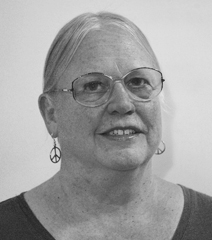Two major transportation issues have the potential to cause negative changes for the Crescenta Valley. As anyone who has lived in the area for any length of time knows, there is tremendous pressure to extend the 710 Freeway from its current end in Alhambra to connect to the Foothill (210) Freeway. International corporate interests and others who would profit from a huge construction project have used the legitimate need to reduce traffic congestion to convince Caltrans and Metro that a tunnel is the best answer.

Atheist/agnostic/secular
humanist/free thinker
sharon@jetcafe.org
There are many flaws with this reasoning. The tunnel would need to be nearly five miles long, the longest in the U.S. The only other tunnel of similar large diameter, the Alaskan Way Tunnel in Seattle, has run into problems and cost overruns and is currently halted. Any link-up with the 210 would result in increased traffic, particularly trucks carrying freight, and generate much more noise, particulate matter air pollution, and danger of accidents in our valley. And it is unlikely to solve the problem. Studies of recently completed freeway widening projects indicate little relief of traffic congestion. Demand simply increases to fill any added capacity.
Caltrans and Metro continue to spend scarce transportation funding on the potential tunnel while ignoring the benefits of faster, less expensive and more readily implemented solutions such as increased light rail and bus service and changes in the configuration of the end of the 710 and surrounding surface streets. Our tax money could be better spent and generate faster results.
The Stopthe710 Yahoo group, No710.com, or the No 710 Extension group Facebook page all have details, links to documents and further background on how bad this tunnel idea really is.
The Draft Environmental Impact Report on the project is scheduled to be released in February 2015 and an alliance of five cities opposed to the push for a tunnel have joined together to share responsibility for responding to it. There is typically a short time period for comments and it is wise to divide the various areas of consideration, such as geotechnical and hydrogeological elements, transportation, air and noise pollution, among experts. This avoids duplication of effort and maximizes the public input. Glendale agreed to join South Pasadena, La Cañada Flintridge, Sierra Madre and Pasadena in a coordinated response.
Support for this effort was on the Nov. 4 Glendale City Council agenda and the discussion among the council members was quite disappointing. There was a motion to direct staff to work with consultants to prepare for the DEIR response. Despite pledging support for the Stopthe710 effort during their respective campaigns, Mayor Sinanyan abstained and Councilmember Devine joined Councilmember Weaver in voting no. With only Councilmembers Najarian and Friedman voting yes the motion failed. A subsequent motion to merely note and file the report passed 4-1 with only Councilmember Najarian voting no.
Councilmembers Devine and Weaver must stand for re-election in April 2015. I urge every voter in Glendale who cares about using tax money effectively to attend the candidate forums and ask pointed questions about this project. It is very important to elect those who not only speak of their support but will also act in their constituents’ best interest.
The other threat to this area is the high-speed rail project. The California High Speed Rail Authority has been working for years to develop the Palmdale to Burbank section along the existing route of the Antelope (14) Freeway. In August, our county supervisor, Mike Antonovich, proposed an alternative through the Angeles National Forest. Either route would start at the Palmdale Transportation Center and end at the Burbank Airport station. Each would require roughly 20 miles of tunnels. While the forest route might reduce impacts on some communities along its route it would severely impact Lake View Terrace and Shadow Hills. There are a series of public meetings to inform the public of the recent consideration of alternatives. See www.hsr.ca.gov/ for more information on this project.
Mass public transportation has the potential to provide environmentally sound options to travel the length of our beautiful state but we must be watchful to make sure the impacts on local communities are not too high.
